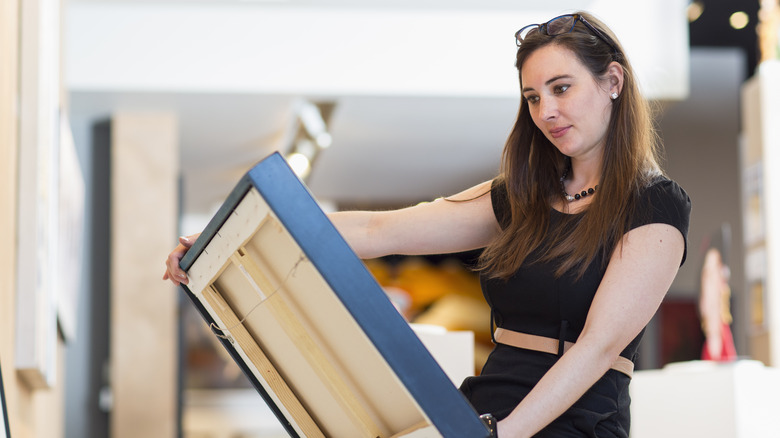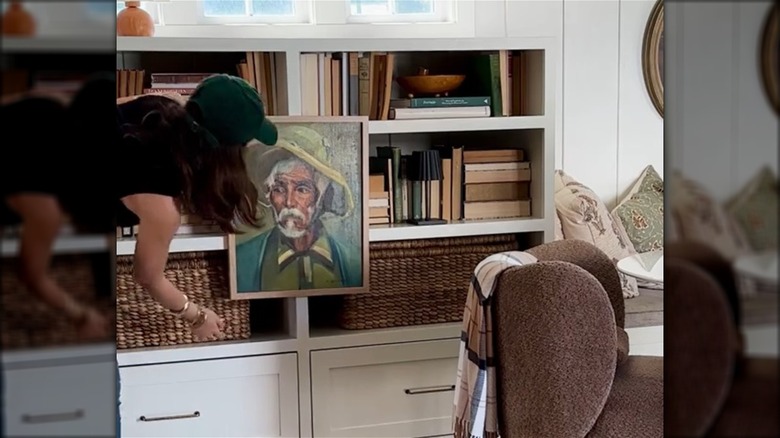The Unexpected Place You Haven't Thought To Hang Your Decor For A Fresh Look
You might be terrified to hammer a nail into a wall, particularly if the wall is plaster. On the other hand, perhaps you have so much art hanging in your home that you have no more wall space. Or, maybe you're just a rebel and like to break all the design rules. Whatever scenario, there's a new trend for you — hanging wall decor on the front of a bookcase or other shelving.
There are many common mistakes people make when hanging artwork on their walls, from not considering scale to hanging pictures too high. However, sometimes it's important to ignore the common artwork guidelines in order to create interest in your home. This novel approach to hanging art is so out of the norm that it'll be hard to find fault. Displayed across a bookcase or shelving, the work will provide an instant focal point for a room and, surely, a conversation piece when guests come around. For an even more dramatic look, some interior designers recommend hanging multiple pieces across shelves that are crammed with books. This creates a cozy, layered, library-esque appearance.
One small sacrifice, however, is that the artwork will block easy access to anything behind it on the bookcase or shelving. Placing something on a shelf such as a book, basket, or bric-a-brac, or retrieving it, may require gingerly maneuvering objects to avoid knocking down the artwork. Still, if you want to make a statement, this trick is worth trying. As 20th-century artist Henri Matisse once said, translated from French, of course: "Creativity takes courage."
How to display art on a bookcase or shelving
Whether it's a bookcase or another type of shelving, you can hang artwork from a nail right on the edge of the bookcase. However, if you want a damage-free way to hang artwork without using nails (which is particularly important if the surface is not solid wood), use hooks that attach with an adhesive strip to the partition of a bookcase or shelf. Replace or at least check on those hooks from time to time to prevent the artwork from falling if the adhesive loses its grip. This is especially important if the frame contains glass. You may also want to mostly hang lightweight artwork to keep it from falling and getting damaged. To give the piece of artwork a solid backdrop, fill the space behind it with baskets or books.
Besides this idea, there are plenty of other unexpected places that you can hang or display artwork in the home as well. For a similar look, try hanging artwork in the back of a bookcase, above a shelf. Small works also nestle nicely inside bookshelves or cabinets with glass doors, on a window ledge facing the inside of room, or propped up on a plate holder on a side table or fireplace mantle. For some truly unique ideas, try displaying pieces on a bathroom counter, at the highest point above kitchen cabinetry, or leaned up against a wall (one idea for spicing up a boring floor). The only limit is your imagination.

